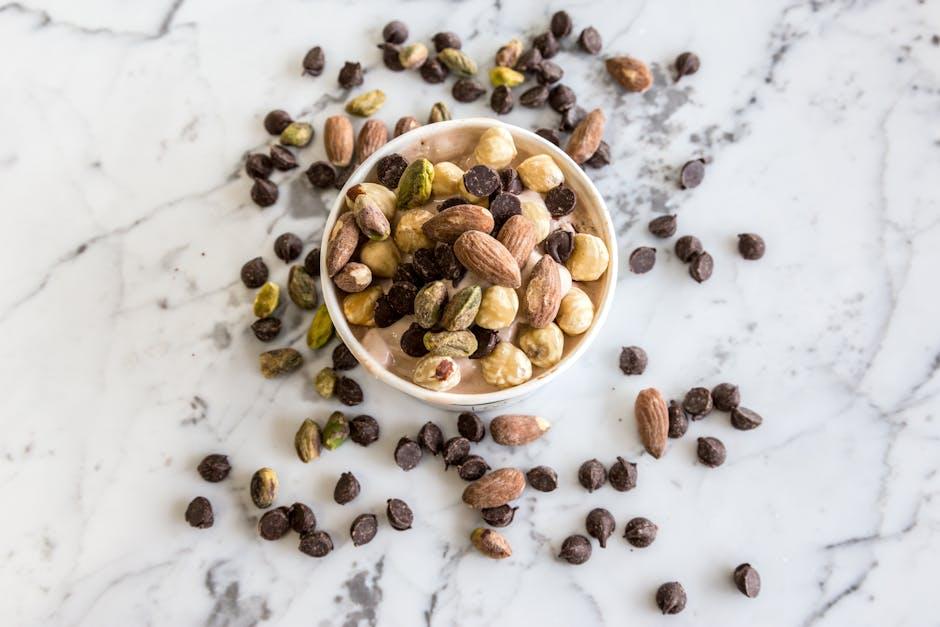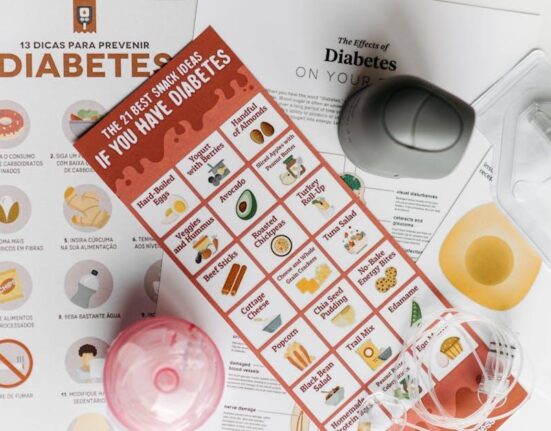Every so often, a sudden wave of desire hits—a craving that whispers for something sweet, salty, crunchy, or creamy. These urges can feel like fleeting whispers or persistent demands, challenging both our willpower and our understanding of hunger. But cravings aren’t just a matter of weak resolve; they are complex messages from our body and mind, intertwined with emotions, habits, and biology. In this article, we will explore practical and insightful ways to understand and handle food cravings, transforming those moments of temptation into opportunities for mindful nourishment and balance.
Table of Contents
- Understanding the Science Behind Food Cravings
- Identifying Emotional and Physical Triggers
- Mindful Eating Techniques to Curb Urges
- Smart Snack Choices That Satisfy Without Overindulging
- Building Lasting Habits for Balanced Craving Management
- Q&A
- Closing Remarks

Understanding the Science Behind Food Cravings
Food cravings are more than just a simple desire; they are complex signals driven by the brain’s chemistry and the body’s physiological needs. When you experience an intense craving, it often stems from the reward system in your brain, especially the release of dopamine, a neurotransmitter linked to pleasure and motivation. This biological response encourages repeated behaviors that satisfy those cravings. Additionally, hormonal shifts involving ghrelin and leptin—the hunger and satiety hormones—can amplify cravings by disrupting the balance between hunger and fullness, especially during stress or lack of sleep.
Understanding the triggers behind your cravings can empower you to manage them effectively. Common factors include:
- Emotional stress: Certain emotions activate the brain’s reward circuits, prompting a search for comfort foods.
- Nutrient deficiencies: The body may crave specific foods to replenish missing vitamins or minerals.
- Environmental cues: Sight, smell, or advertisement of food can trigger involuntary cravings.
| Trigger | Example | Effect |
|---|---|---|
| Stress | Work pressure | Increased sugary/fatty food cravings |
| Nutrient Deficiency | Low magnesium | Desire for chocolate |
| Environmental Cue | Passing by a bakery | Sudden urge to buy pastries |

Identifying Emotional and Physical Triggers
Recognizing your emotional state before a craving hits is a powerful step toward managing it effectively. Often, feelings like stress, boredom, or sadness can masquerade as hunger, leading to impulsive snacking. By tuning into your emotions, you can differentiate true physical hunger from emotional needs, helping to make mindful choices rather than reactive ones.
Physical signals also play a crucial role. Notice if your cravings occur at specific times or after particular activities, such as feeling fatigued in the late afternoon or after a long meeting. These bodily cues are your mind’s way of signaling a need for energy or comfort, and understanding them can empower you to respond appropriately—whether through a nutritious snack, hydration, or a brief pause for relaxation.
- Stress and anxiety: Can trigger a desire for high-sugar or high-fat comfort foods.
- Dehydration: Mistaken for hunger but often resolved with water.
- Fatigue: Often leads to cravings for quick energy boosters.
- Boredom or routine: Eating out of habit rather than hunger.
| Trigger Type | Common Signs | Ideal Response |
|---|---|---|
| Emotional | Irritability, restlessness | Practice deep breathing or journaling |
| Physical | Stomach growling, fatigue | Choose a balanced snack or hydrate |

Mindful Eating Techniques to Curb Urges
Taking a moment to slow down and truly engage with your food can transform how you respond to cravings. Begin by focusing on your senses—notice the colors, textures, and aromas before taking your first bite. This simple practice anchors you in the present moment, making it easier to recognize when you’re genuinely hungry versus eating out of habit or emotion. Try these steps to enhance your mindful eating experience:
- Chew thoroughly: Savor each bite, aiming to chew 20-30 times before swallowing.
- Put your fork down: Take pauses between bites to listen to your body’s signals.
- Identify feelings: Ask yourself if the craving stems from hunger, boredom, or stress.
- Mindful portions: Choose smaller servings to appreciate food without overindulging.
Understanding the difference between physical hunger and emotional urges is crucial for long-lasting control over craving-driven eating. Use the table below to help differentiate these sensations by observing your body’s cues. By tuning into these signals, you empower yourself to make choices that truly satisfy your nutritional needs rather than momentary desires.
| Physical Hunger | Emotional Urges |
|---|---|
| Comes on gradually | Sudden and intense |
| Open to variety of foods | Craving specific comfort foods |
| Leads to satisfaction when full | Continues despite fullness |
| Physical signs like stomach growling | Linked to stress, boredom, or emotions |

Smart Snack Choices That Satisfy Without Overindulging
When craving strikes, reaching for snacks that deliver satisfaction without tipping the calorie count is key. Focus on snacks rich in fiber, protein, and healthy fats, as these nutrients help maintain fullness and stabilize blood sugar levels. Options such as a small handful of almonds, Greek yogurt with berries, or sliced veggies paired with hummus can curb hunger while nourishing your body. Incorporating these smart choices into your routine makes it easier to stay on track without feeling deprived.
Mixing flavors and textures can also trick your mind into feeling more satisfied. Try combining crunchy and creamy elements for a more indulgent experience without the guilt. Consider these delicious combinations:
- Apple slices with almond butter
- Carrot sticks dipped in guacamole
- Cottage cheese topped with pineapple chunks
- Rice cakes with avocado and cherry tomatoes
| Snack | Calories | Protein (g) | Fiber (g) |
|---|---|---|---|
| Handful of almonds (1 oz) | 165 | 6 | 3 |
| Greek yogurt (½ cup) | 80 | 10 | 0 |
| Veggie sticks with hummus (½ cup) | 100 | 3 | 4 |
| Apple with almond butter (1 small) | 150 | 2 | 4 |

Building Lasting Habits for Balanced Craving Management
Creating habits that stand the test of time involves more than just willpower—it demands a strategic approach to rewiring your daily routine. Start by identifying small, manageable changes that directly address common craving triggers. This might include swapping out sugary snacks for fresh fruits, increasing water intake to curb false hunger signals, or scheduling mindful breaks to reset your focus. Consistency is the secret ingredient; by integrating these changes steadily, your brain begins to associate healthier choices with pleasure and satisfaction, reducing the intensity of cravings over time.
Consider incorporating these techniques into your routine:
- Mindful eating: Savor every bite to build awareness of true hunger cues.
- Stress management: Use deep breathing or light exercise to dissipate emotional triggers.
- Sleep hygiene: Prioritize rest as fatigue often amplifies craving intensity.
- Reward system: Celebrate small victories to strengthen commitment.
| Habit | Impact on Craving |
|---|---|
| Daily Hydration | Reduces false hunger signals |
| Regular Sleep Schedule | Balances hunger hormones |
| Mindful Snacking | Increases satisfaction |
| Stress Reduction | Prevents emotional eating |
Q&A
Q&A: How to Handle Food Cravings
Q1: What exactly causes food cravings?
A1: Food cravings often stem from a mix of biological, psychological, and environmental factors. Hormonal changes, stress, emotional triggers, or simply seeing or smelling certain foods can ignite the urge to indulge. Sometimes, it’s your brain’s way of signaling a need for specific nutrients or comfort.
Q2: Are all food cravings a bad thing?
A2: Not necessarily. Cravings can guide you towards honoring your body’s needs. Occasionally satisfying a craving in moderation can be part of a healthy relationship with food. The key is to recognize when cravings serve a purpose and when they might lead to mindless overeating.
Q3: How can I tell the difference between hunger and a craving?
A3: Hunger develops gradually and can be satisfied by a variety of foods, while cravings are often sudden and specific—like a sharp desire for chocolate or potato chips. Try drinking water or waiting 15 minutes; true hunger usually persists, but cravings tend to fade.
Q4: What are some practical ways to manage or reduce food cravings?
A4: Staying hydrated, eating balanced meals with protein, fiber, and healthy fats, and maintaining regular meal times can stabilize blood sugar, which helps curb cravings. Mindful eating practices—pausing to savor your food and acknowledging cravings without judgment—can also reduce their intensity.
Q5: Can distractions really help with cravings?
A5: Absolutely. Engaging in an activity you enjoy—like walking, reading, or chatting with a friend—can redirect your focus and lessen the craving. Often, cravings are fleeting sensations that weaken once your mind shifts away from food.
Q6: Is there a role for healthy substitutes in craving control?
A6: Yes. Swapping out high-sugar or high-fat treats for healthier alternatives like fruit, nuts, or yogurt can satisfy the desire for something sweet or crunchy without overloading on empty calories. Experiment to find what fulfills your tastebuds and keeps you satisfied.
Q7: When should I seek professional help for food cravings?
A7: If cravings feel uncontrollable, cause distress, or lead to frequent binge eating, consulting a healthcare provider or a registered dietitian might be beneficial. They can help uncover underlying issues and guide you toward balanced eating habits.
Q8: Can mindset influence how we handle cravings?
A8: Definitely. Cultivating a compassionate and curious mindset—approaching cravings with awareness rather than shame—empowers you to make choices that align with your health goals. Viewing cravings as simple signals rather than enemies can transform your relationship with food.
Handling food cravings is less about “resisting” and more about understanding and responding thoughtfully. With patience and practice, you can navigate cravings with balance and grace.
Closing Remarks
In the grand buffet of life, food cravings are inevitable guests—sometimes delightful, sometimes demanding. Learning to handle them isn’t about banishing these urges but understanding and managing them with mindful choices. By tuning into your body’s true needs and sprinkling in a dash of patience, you can transform cravings from stumbling blocks into stepping stones on your journey to balanced living. So next time that sudden craving knocks, greet it with curiosity rather than resistance—and savor the control you’ve cultivated.














Leave feedback about this